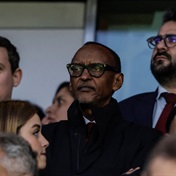
- About 4.5 million people voted, while the ZEC claimed to have printed about 7.1 million ballot papers.
- Voter apathy was marked in some opposition strongholds - perhaps because it was harder to vote there.
- Turnout was expected to be lower than in 2018 but showed surprising variations across Zimbabwe's regions.
Many things could - and did - go wrong with Zimbabwe's 2023 election. But a shortage of ballot papers should not have been one of them.
Zimbabwe's total voting population in this election was 6 623 511, so the Zimbabwe Electoral Commission (ZEC) printed 7 126 600 ballot papers, and promised there would be 3% extra at every polling station.
The results show just more than 4.5 million people actually voted, so there should have been a full 2.6 million extra ballot papers spread across Zimbabwe.
But there may have been a smaller pile of excess ballot papers, somewhere, had they actually been distributed to polling stations on time.
READ | China is ready to work with Zimbabwe, the US not so much, after its disputed election
Voter turnout was never expected to set any records; ahead of the election, public opinion research think tank Afrobarometer predicted fewer voters would bother than had in 2018, the first election after the November 2017 coup.
The final turnout numbers were surprising, however, in their regional spread.Overall, 68.86% of voters turned up, sharply down from 85.10% in 2018.
That, some analysts said, was at least partially to blame on postponements in some areas that were traditionally strongholds for the opposition.
The biggest number of voters in the general elections were in Mashonaland West, Mashonaland Central, and Mashonaland East - traditional Zanu-PF strongholds where numbers held out relatively well.
Their turnout totals were:
- 72.85% in Mashonaland West, down from 84.82% in 2018.
- 77.87% in Mashonaland Central, down from 90.8%.
- 71.85% in Mashonaland West, down from 84.82%.
As expected, Zanu-PF's Emmerson Mnangagwa received more votes than the opposition Citizens Coalition for Change's Nelson Chamisa in those areas.
And that was not diluted by votes for Saviour Kasukuwere, who some in Zanu-PF feared would be popular in Mashonaland - because he was disqualified before the election.
In the Midlands - where the final count was just about a toss-up between the two top parties - turnout was slightly below the national average at 67.71%, down from 84.11% five years before.
But a preference for Zanu-PF did not necessarily correlate with significantly higher turnout.
READ | Presidency hails Zim's 'harmonised elections', but fails to mention the claims of 'intimidation'
Masvingo, another Zanu-PF stronghold that decisively voted for Mnangagwa in 2018, saw 69.79% cast their ballots, down from 84.1%.
The three Mashonaland provinces plus Masvingo and the Midlands make up slightly more than a third of the total voter population.
In 2018, ZEC data showed, the Zanu-PF candidate's vote share across the five was 62%.
A slow vote in opposition strongholds
Their opposites, in 2018, were the two metropolitan provinces of Bulawayo and Harare, along with Matabeleland North, which is largely rural.
Across those three regions, the opposition had a 66% share of the vote.
In Harare, where voting in some polling stations was extended to the following day because of the unavailability of voting materials, the turnout was 67.7%, down from 85.65% in 2018.
In Matabeleland North, 60.62% cast their votes, down from 82.74%.
And in Bulawayo, 58.79% voted, down from 83.9% in 2018.
All three were safely bagged by Chamisa, but with a tally of individual votes that, those turnout numbers suggest, was far lower than it might have been had voting gone more smoothly.
The News24 Africa Desk is supported by the Hanns Seidel Foundation. The stories produced through the Africa Desk and the opinions and statements that may be contained herein do not reflect those of the Hanns Seidel Foundation.




 Publications
Publications
 Partners
Partners
























